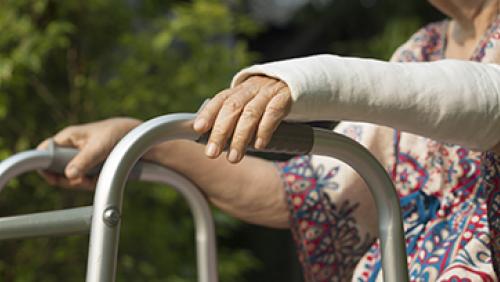LATEST NEWS
- All news
-
43Awards
-
9Burden of Osteoporosis
-
78Capture the Fracture
-
1Exercise
-
1FRAX
-
86IOF
-
35IOF Positions and Statements
-
1IOF Tour Latin America
-
22Meetings
-
73Member News
-
9Nutrition
-
37Policy
-
6Prevention
-
52Research
-
30Scientific Journals
-
14Skeletal Rare Diseases
-
7Training Courses
-
17Treatment
-
32World Osteoporosis Day
- News room - Latin America Region

The impact of interruption of anti-osteoporosis treatment in patients on therapy with bisphosphonates or denosumab is reviewed in a new International Osteoporosis Foundation (IOF) working group paper 'Fracture risk following intermission of osteoporosis therapy' published in the journal Osteoporosis International.*
The widespread practice of recommending one to two year ‘drug holidays’ arose following concerns that long-term use of bisphosphonates is associated with rare side effects, namely atypical femoral fractures and osteonecrosis of the jaw. However, available evidence suggests that for patients who are at high risk of fracture the risk-benefit ratio is clearly in favour of treatment continuation, with approximately 100 new fragility fractures prevented for each of these adverse events.
Lead author, Prof. Elaine Dennison, of the MRC Lifecourse Epidemiology Unit, University of Southampton, UK, stated: "Our aim was to review the available literature to assess what evidence exists to inform decision making on drug holidays and to identify any indicators that might help clinicians decide whether to continue or discontinue therapy in individual patients.”
In general, few studies have fully considered this topic. However, based on the available evidence in prospective and retrospective analyses, the authors found that after stopping bisphosphonate treatment there was higher risk of new non-vertebral fractures in women who had a total hip T-score below -2.5, and the risk of clinical vertebral fractures was approximately double. As well, rapid bone loss occurs following denosumab discontinuation, with the incidence of multiple vertebral fractures around 5%.
Studies that considered long-term continuation did not identify increased fracture risk, and reported only very low rates of adverse skeletal events such as atypical fractures. Professor Serge Ferrari, co-author and Chair of the IOF Committee of Scientific Advisors added: "This review points to the need for a far more nuanced approach to drug holidays. Osteoporotic fractures can be life-threatening and have a devastating impact on quality of life. Doctors and patients must be aware that, particularly for individuals at high risk, the benefits of staying on treatment clearly outweighs the risk of rare side effects. Furthermore, it is important to understand that bisphosphonates and denosumab are fundamentally different types of treatment which require different approaches as discontinuation of denosumab results in rapid bone loss, at least in subjects not previously exposed to long-lasting bisphosphonates.”
IOF President Prof. Cyrus Cooper, co-author, concluded: "The burden of osteoporotic fractures is very high and costly, resulting in disability and loss of independence in millions of older women and men worldwide. The efficacy of proven treatments is well established with fracture reduction in the order of 50% possible. Rather than practicing indiscriminate application of drug holidays, we encourage more informed decision making and appropriate counselling of high-risk patients on the individual benefits of treatment continuation versus cessation."
* E.M. Dennison, C. Cooper, J.A. Kanis, O. Bruyère, S. Silverman, E. McCloskey, B. Abrahamsen, D. Prieto-Alhambra, S. Ferrari, on behalf of the IOF Epidemiology/Quality of Life Working Group. Fracture risk following intermission of osteoporosis therapy. Osteoporos Int (2019) https://doi.org/10.1007/s00198-019-05002-w
About IOF: The International Osteoporosis Foundation (IOF) is the world's largest nongovernmental organization dedicated to the prevention, diagnosis and treatment of osteoporosis and related musculoskeletal diseases. IOF members, including committees of scientific experts as well as more than 240 patient, medical and research societies in 99 countries, work together to make fracture prevention and healthy mobility a worldwide heath care priority. Check the World Osteoporosis Day website here.